Moon base: Research in Wales will help humans live on the Moon
- Published
- comments
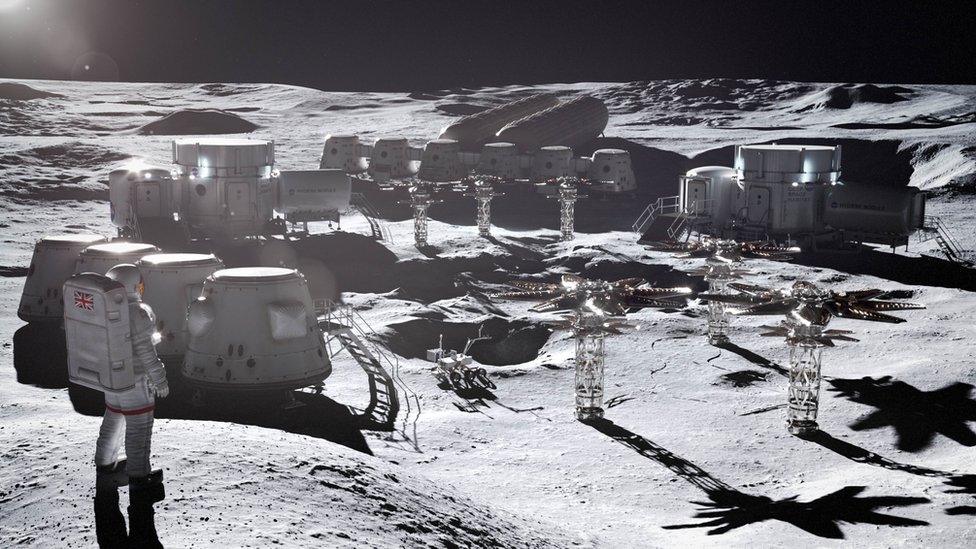
If a Moon base is built it will need a reliable energy source to operate and to house astronauts
Scientists have developed an energy source which could allow astronauts to live on the Moon for long periods of time.
Working with Nasa, Bangor University has designed nuclear fuel cells - the size of tiny poppy seeds - that produce enough energy needed for life on the lunar surface.
Nasa is returning to the Moon as part of a programme of missions named Artemis, with the aim to build a base that can be lived in by around 2030.
Prof Simon Middleburgh from the university said the work to build the energy cells was a challenge - "but it was a fun one".
Why does Nasa want to build a base on the Moon?
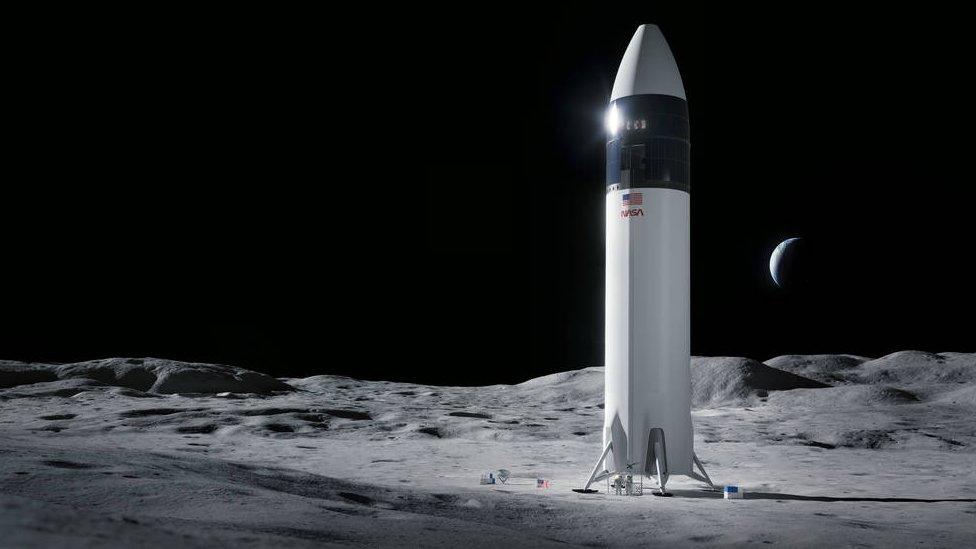
A crewed mission to the Moon is planned to land on the lunar surface no sooner than 2025
It's hoped that a base on the Moon can be used for future missions to Mars.
Once there spacecraft can be re-fuelled before blasting off deeper into the solar system.
Launches will also require much less power to get off the ground because the Moon's gravitational pull is less than 17% of that experienced on Earth.
That means a person, or rocket, is around six times lighter on the Moon than they are on Earth.
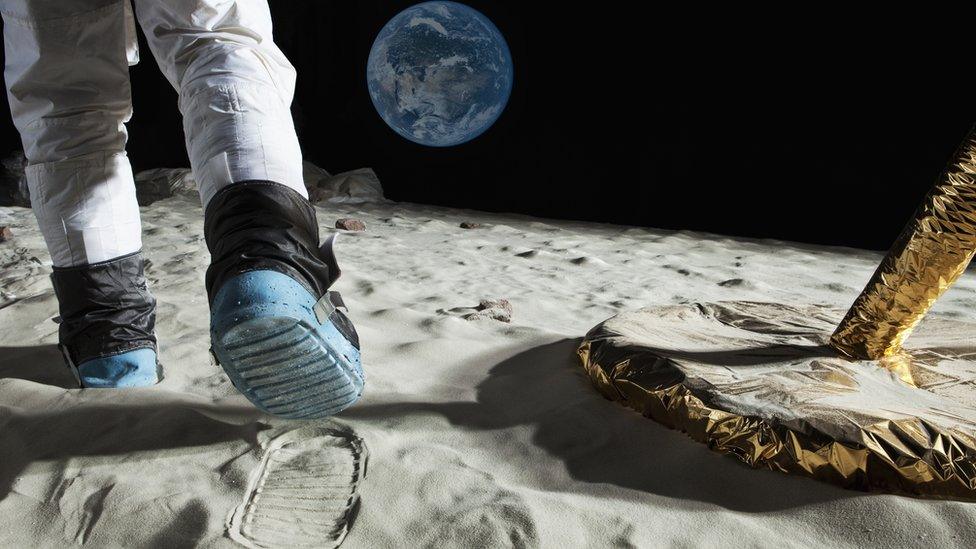
How will humans survive the Moon's harsh environment?
A base would need to protect astronauts from the harsh environment of the lunar surface.
On parts of the Moon, temperatures plummet to astonishing lows of -248C because it has no atmosphere to warm or trap heat on the surface.
So, the team at Bangor University has been working out ways of producing energy and heat so people can live there.
The researchers have now sent their tiny nuclear fuel cell, called a Trisofuel, for testing.
This Trisofuel cell could be used to power a micro nuclear power generator, made by British manufacturer, Rolls Royce.
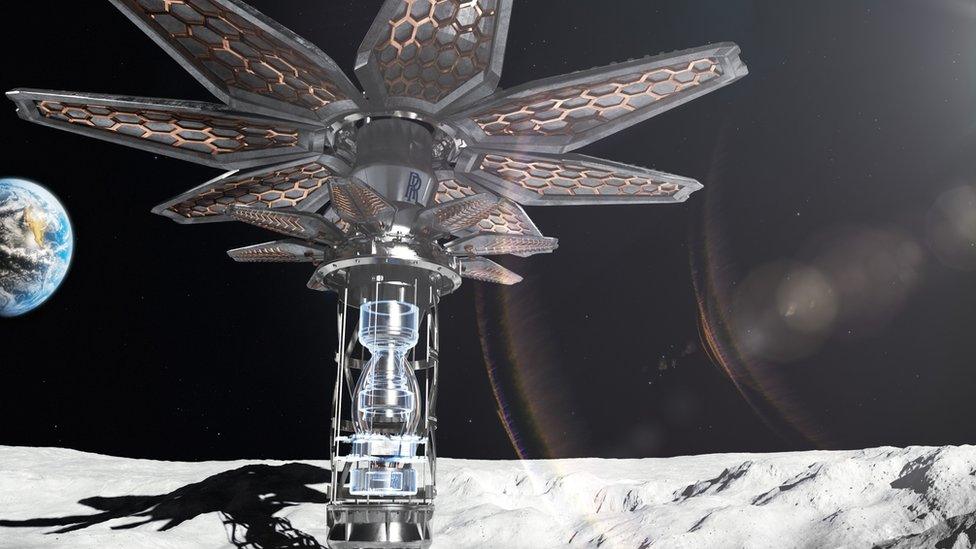
An artist impression of what the power generator might look like on the Moon
"The generator is a portable device, the size of a small car and "something you can stick on a rocket," Prof Middleburgh said.
That will now be fully tested and put through forces similar to being blasted up into space, ready for a Moon base in 2030.
He added: "You can launch them into space, with all the forces… and they'll still function quite safely when they're put onto the Moon."
The university also hopes the micro generators could also be used here on Earth, in places like disaster zones when electricity has been cut off.
The generator is a portable device, the size of a small car and "something you can stick on a rocket.
More Moon missions and the race for a lunar base
Earlier this month, India made a historic landing near the Moon's south pole with its robotic probe Chandrayaan-3.
One of the mission's major goals is to hunt for water-based ice which, scientists say, could support human life on a Moon base in future.
It's one of several missions to the Moon, with Russia, China and America also scheduling missions to the surface first visited by humans in 1969 - more than 50 years ago.
Learn about the history of explorations in space
Not only is the Moon important for further exploration deeper into space, it is also home to valuable resources, such as titanium, lithium, silicon, and iron, which are used for all sorts tech - such as phones and batteries - and can be mined for beneath the lunar surface.
China wants to be the first nation to begin building a Moon base by the late 2020s with an American-led Nasa base expected at the start of the 2030s.
- Published4 April 2023

- Published22 August 2023
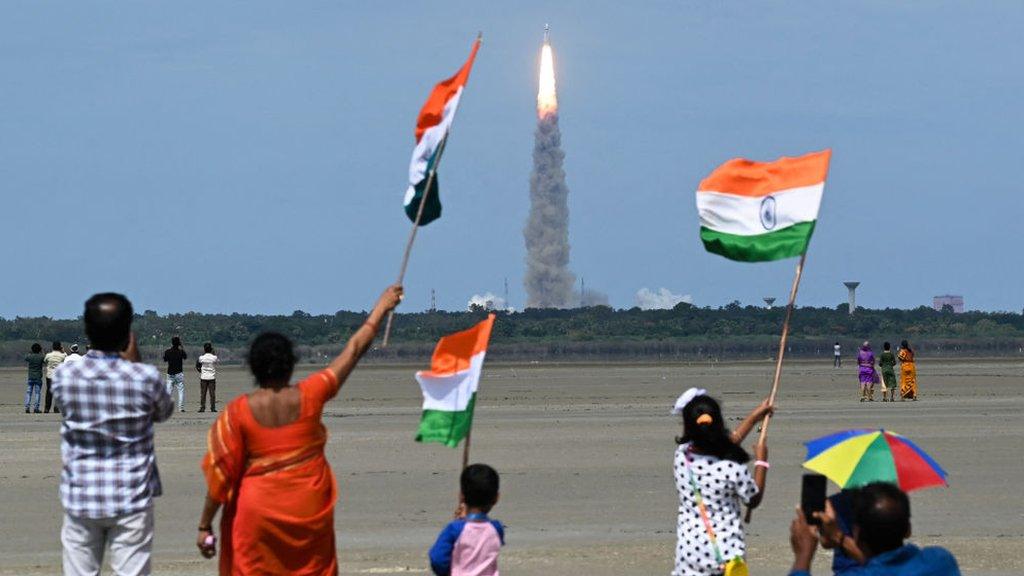
- Published13 May 2020

